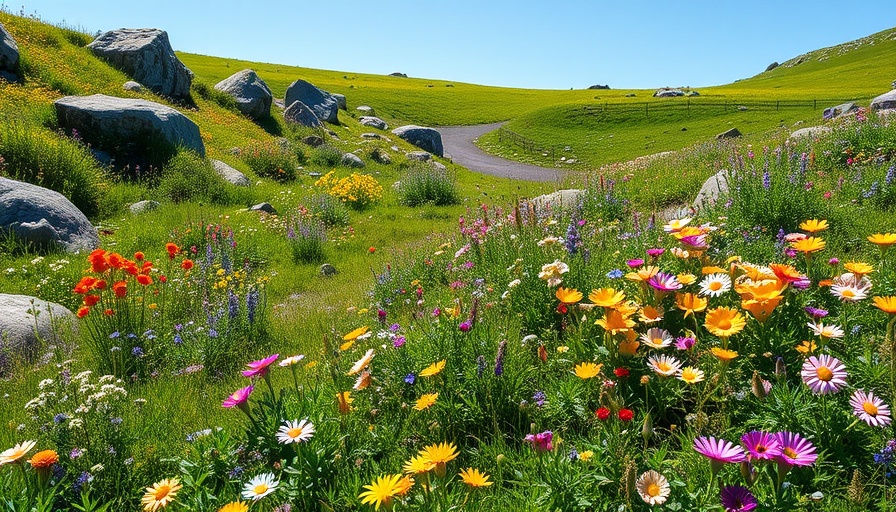
Understanding the Challenge of Invasive Plants
Invasive plant species are not just a gardening headache; they play a significant role in the global biodiversity crisis. Currently, it’s estimated that 25 percent of species face the threat of extinction, and ecosystems are declining at an alarming rate of 47 percent compared to their historical conditions. While many people may think of horticulture as simply a hobby or aesthetic pursuit, the implications behind invasive species demand a deeper, more strategic approach to management.
This is where the Perfect Earth Project steps in, advocating for innovative, non-chemical methods to mitigate these ecological threats. Participants at the annual symposium at Stone Barns Center for Food & Agriculture recently shared profound insights on combating invasive plants without the use of harmful herbicides.
Seven Practical Strategies to Control Invasive Species
Managing invasive plants can seem daunting, but experts have devised actionable strategies rich in ecological wisdom:
- Plant Native Species: Deliberately selecting native plants not only beautifies landscapes but outcompetes invasives for resources. As Evelyn Beaury suggests, integrating local flora creates a natural balance within the ecosystem.
- Physical Barriers: Implementing thick tarps or sheets to smother invasive plants deprives them of sunlight and creates the conditions necessary for native species to thrive. For instance, Ashley Gamell’s use of black plastic tarps over mature mugwort demonstrates a creative yet practical approach borrowed from art.
- Manual Removal: Pulling out invasives by hand or cutting them down during their flowering phase disrupts seed production. This method can be labor-intensive but proves effective in smaller areas.
- Mulching: Covering the ground with organic mulch not only suppresses weeds but enriches the soil with nutrients over time, promoting healthy native growth.
- Restoration Projects: Collaborating on local restoration projects with community organizations can multiply efforts, spreading awareness and education on why managing invasives matters.
- Community Education: Raising awareness about the invasive species that threaten local ecosystems helps inform and empower neighbors to participate in coordinated efforts.
- Maintain a Healthy Ecosystem: Focus on soil health, water management, and biodiversity to create an ecosystem that's less susceptible to invasives. Engaging with local experts for tailored advice can elevate restoration efforts significantly.
The Power of Language: A Shift in Perspective
Beyond practical strategies, linguistics plays a crucial role in how we approach invasives. Rebecca McMackin emphasizes the importance of reframing the narrative. Using terms like ‘war on invasives’ casts a negative shadow and may prompt polarized reactions. Instead, employing neutral and descriptive terms to classify plants paves the way for a more constructive discussion. For example, referring to plants by their common or local names fosters a connection rather than a division.
Creating a Cooperative Community
Gardening is often viewed as a solitary activity, but managing invasives can benefit greatly from communal efforts. Community workshops and local initiatives can motivate homeowners to work together, sharing resources, knowledge, and strategies that extend beyond individual yards. As the experts have shown, collaboration can significantly enhance the effectiveness of invasive plant control, fostering a sense of stewardship towards our shared environment.
Future Predictions and Environmental Trends
As gardening trends shift towards more ecological and sustainable practices, understanding the ecosystem dynamics involving invasive species will be critical. Expect to see an increase in native gardening initiatives across neighborhoods, bolstered by both governmental support and grassroots movements.
Decisions You Can Make Today for a Greener Tomorrow
For homeowners, the fight against invasive plants is not just about eliminating a nuisance; it’s about making informed, proactive decisions that benefit the environment. Selecting native plants, participating in local invasive management efforts, and adopting sustainable landscape practices are powerful tools at your disposal. Every small step contributes to a larger movement of environmental stewardship and ecological preservation.
Join the Movement
Engaging with local eco-gardening initiatives and participating in conversations about invasive plants allows everyone to contribute positively to their environment. By understanding the strategies and philosophies surrounding invasive species management, we collectively empower ourselves and our communities to protect our cherished ecosystems. Join workshops, collaborate with experts, and start transforming your garden into a sanctuary for native plants.
 Add Row
Add Row  Add
Add 




Write A Comment